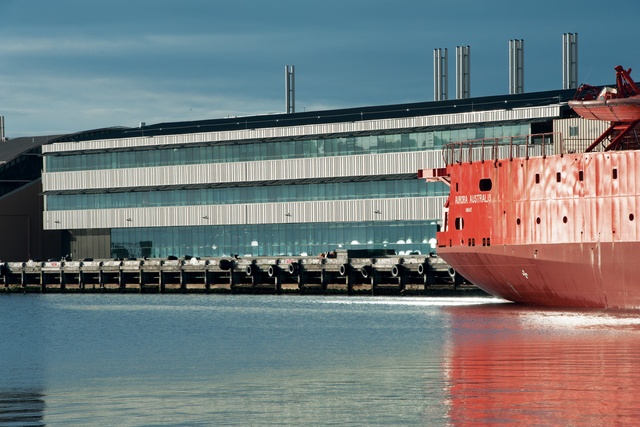
In architecture, everything begins with the site – which cannot properly be separated from the place. This is especially so in the case of the University of Tasmania’s Institute for Marine and Antarctic Studies building (IMAS) in Hobart designed by John Wardle Architects in association with Terroir. Situated on the very edge of the waterfront on Princes Wharf, just across from Salamanca Place, IMAS occupies the space on which previously stood the second of two large sheds built to service ships loading and unloading alongside. The first of those sheds, Princes Wharf No. 1, still remains (refurbished, it is now used for public events and exhibitions) and IMAS stands between it and another large shed-like structure, belonging to CSIRO, further along the water’s edge.
This part of Hobart – the open space of Sullivans Cove – is where the city and the surrounding landscape are drawn together in a place that has great historical as well as topographical significance. Here the hills meet the river – gesturing to the mountain behind and the sea beyond – on a flat surface, like the floor of an amphitheatre, that encompasses reclaimed land, concrete harbour apron and the water plane of the cove itself. The significance of the site and the need to attend not only to its heritage values, but also to its topography, to its character as a civic space, and to the engineering demands of its positioning on the sea wall, meant that the overall context within which the design process was situated was already well-defined before there were any considerations pertaining to the building itself or the needs of the Institute. One might even say the design process was therefore heavily constrained, except that here the “constraints” were no mere external impositions, but related directly to values and conditions inherent in the place itself – so that the need for the design to respond “to the place” was all the more salient. Yet though the design context may have been complex, the building that has resulted has a simplicity and clarity that belie any such underlying complexity.
via. ArchitectureAU Latest
